Calling all electric scooter riders! Let’s dive into the heart and soul of your beloved ride – the electric scooter Batteries. When it’s time for maintenance or servicing, we all instinctively turn our attention to one crucial component: the battery.
Now, let’s talk about some aspects of electric scooter battery technology! Thanks to remarkable advancements, especially in lithium-ion batteries, the industry has witnessed a revolution.
These batteries bring a whole new level of excitement with their impressive features like high energy density, longer lifespan, and speedy charging capabilities. They’re the secret behind your electric scooter’s extended range and the reason you can enjoy an incredible riding experience.
| Key Takeaways |
|---|
| 1. Battery Types: Electric scooters primarily use lithium-ion batteries, with variations like Lithium Manganese (INR, NMC), Lithium FerroPhosphate (LFP), and Lithium Polymer (LiPo), each offering unique advantages. |
| 2. Battery Specifications: Understanding voltage, Amp-Hours (Ah), and Watt-Hours (Wh) helps assess a battery’s power, range, and capacity. |
| 3. Battery Placement: Batteries can be placed in the stem, deck, or as removable options, each with its pros and cons. |
| 4. Battery Performance: Factors affecting performance include range, voltage sag, charging time, and battery management systems (BMS). |
| 5. Battery Safety: Proper handling, charging, and storage practices are essential to ensure safety and prevent hazards. |
| 6. Battery Replacement: Know when to replace a battery based on reduced range, difficulty holding a charge, physical damage, or age. |
| 7. Battery Upgrades: Consider upgrading for increased capacity or advanced battery technologies, ensuring compatibility and manufacturer recommendations. |
| 8. Environmental Impact: Battery recycling programs and sustainability initiatives are essential to minimize environmental impact. |
| 9. Future Trends: Expect advancements in battery technology, including extended range, rapid charging, and smart features integration. |
| 10. Renewable Energy: Renewable energy sources like solar and wind can be used for eco-friendly charging. |
| 11. Gotrax Electric Scooter Batteries: Gotrax offers electric scooters with different battery capacities, providing various ranges and charging times. |

Photo Credit: Pure Electric
Table of Contents
ToggleUnderstanding Electric Scooter Batteries
Definition and Purpose of Electric Scooter Batteries
An electric scooter battery serves as a vital rechargeable energy storage device that powers the scooter’s motor. It is the powerhouse that stores electrical energy and converts it into mechanical energy which means, propelling the scooter forward with remarkable efficiency.
Without a reliable and capable battery, the electric scooter would be rendered motionless, unable to deliver the electrifying experience riders seek.
Exploring the Types of Electric Scooter Batteries
When it comes to electric scooter batteries, there are several types available, each with its own set of characteristics and performance attributes. Let’s explore the most common types:
Lithium-ion Batteries:
Lithium-ion batteries have revolutionized the electric scooter industry, they offer high energy density, longer lifespan, and faster charging capabilities. Within the realm of lithium-ion batteries, there are different variations to consider:
- Lithium Manganese (INR, NMC): Lithium Manganese batteries, also known as INR (Nickel Cobalt Aluminum) and NMC (Nickel Manganese Cobalt), are renowned for their high energy output and enhanced safety features. They strike a balance between energy capacity, power output, and reliability, making them a popular choice for electric scooters.
- Lithium FerroPhosphate (LFP): Lithium FerroPhosphate batteries, often referred to as LFP or LiFePO4, excel in terms of safety, durability, and thermal stability. They are known for their ability to withstand extreme temperatures, making them ideal for riders in varied climates. LFP batteries are renowned for their longer lifespan and consistent performance.
- Lithium Polymer (LiPo): Lithium Polymer batteries, commonly known as LiPo, offer a flexible and lightweight battery solution. They can be custom-shaped to fit within the design of electric scooters, allowing for greater versatility in design and aesthetics. LiPo batteries provide a good balance between energy density and cost-effectiveness.
Lead-acid Batteries:
Lead-acid batteries, while less common in modern electric scooters, have been widely used in earlier models. These batteries are known for their affordability but come with certain drawbacks.
They tend to be heavier, have a lower energy density, and require more maintenance compared to lithium-ion alternatives. However, lead-acid batteries still find use in some entry-level and budget-friendly electric scooters.
Nickel Metal Hydride (NiMH) Batteries:
NiMH batteries offer a middle ground between lead-acid and lithium-ion batteries. They provide a decent balance between energy density, cost, and environmental friendliness.
However, their performance and capacity are typically lower compared to lithium-ion batteries. NiMH batteries are gradually being phased out in favor of more advanced lithium-ion technologies.

Battery Specifications
To understand electric scooter batteries fully, it’s essential to familiarize ourselves with battery specifications:
Voltage:
Voltage is a crucial measurement that indicates the electrical potential stored in a battery. It can be likened to the pressure that drives electrons to flow through a circuit.
For electric scooters, batteries are commonly categorized based on their voltage, such as 36V, 48V, 52V, 60V, 72V, or 84V. A higher voltage corresponds to a greater amount of stored energy and increased electrical pressure, leading to faster acceleration and higher power output.
To illustrate this, let’s consider two electric scooters—one equipped with a 48V battery and another with a 60V battery. The scooter with the 48V battery may offer a smooth and comfortable ride, while the one with the 60V battery will likely provide more robust acceleration and a higher top speed.
Amp-Hours (Ah):
Amp-hour (Ah) is a vital unit of measurement that indicates the amount of electrical charge a battery can supply within an hour. It plays a significant role in determining the capacity and endurance of batteries, including those used in electric scooters.
For instance, let’s consider an electric scooter with a 15Ah battery. This means that the battery can deliver a current of 15 amps for one hour.
If the scooter operates at an average current of 7.5 amps, the battery will last for approximately two hours before needing to be recharged. This allows riders to comfortably cover moderate distances on a single charge.
On the other hand, if we examine a scooter with a smaller 5Ah battery, the runtime would be shorter. In this scenario, if the scooter operates at the same average current of 7.5 amps, the battery would last for about 40 minutes before requiring a recharge. Riders would need to plan their trips accordingly and be aware of the battery’s limitations.
So higher voltage results in greater stored energy and increased electrical pressure, delivering faster acceleration.
Watt-Hours (Wh):
Watt-hours (Wh) provide a comprehensive measurement of the total energy capacity stored in electric scooter batteries. It is calculated by multiplying the voltage by the Amp-Hours (Ah), giving riders a clear understanding of the battery’s overall energy storage capability.
To better grasp the concept, let’s consider an example:
Suppose we have an electric scooter with a 48V battery and a capacity of 10Ah. By multiplying these values (48V * 10Ah), we get a total of 480 watt-hours. This means that the battery can deliver a total of 480 watts of power for one hour or a proportional amount of power over a longer duration.
A scooter with a higher watt-hour rating will typically have a greater range compared to one with a lower rating.
Capacity Ratings:
Capacity ratings are a critical factor to consider when evaluating battery options for electric scooters, as they provide valuable insights into the energy storage capacity of the battery.
For example, suppose you have two electric scooter batteries: Battery A with a capacity rating of 10Ah and Battery B with a capacity rating of 15Ah. The higher capacity rating of Battery B indicates that it can store more energy compared to Battery A.
As a result, Battery B has the potential to deliver a longer range and allow riders to travel further on a single charge.
When comparing battery options, riders should carefully consider their specific needs and usage patterns. On the other hand, if shorter commutes or portability is more important, a battery with a lower capacity rating may suffice.
Battery Brands and Cell Types
When choosing an electric scooter battery, evaluating battery brands and cell types can provide insights into quality and performance:
Evaluating Battery Brands:
Consider reputable battery brands such as FST, LG, Samsung, and others. These brands often prioritize safety, reliability, and performance in their battery designs.
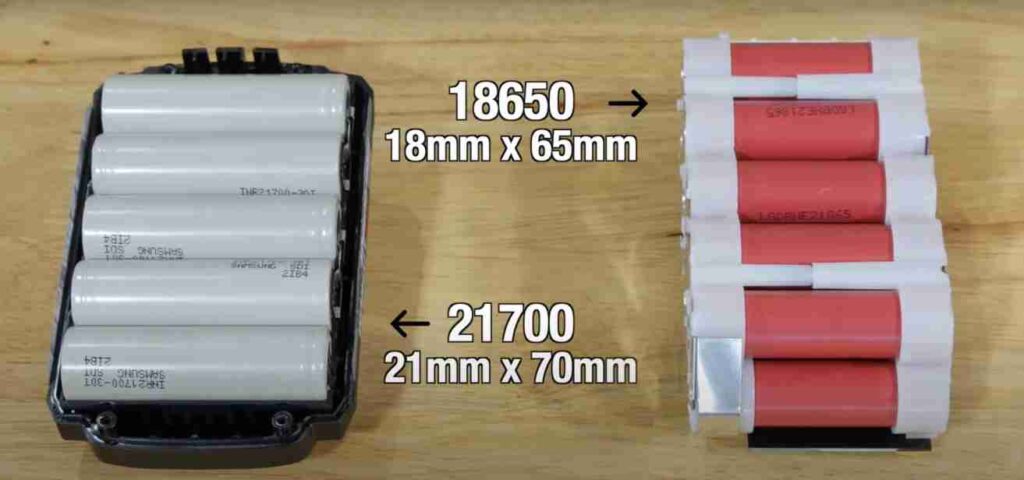
Photo Credit: Pro Tool Reviews
Comparison: 18650 vs. 21700 Cells:
Electric scooter batteries may utilize different cell types, such as 18650 or 21700 cells.
| Particulars | 18650 Cell | 21700 Cell |
|---|---|---|
| Size | 18mm diameter, 65mm length | 21mm diameter, 70mm length |
| Capacity | Typically lower | Higher capacity |
| Energy Density | Lower | Higher |
| Performance | Good | Excellent |
| Power Output | Moderate | High |
| Compatibility | Widely available | Increasing availability |
While both offer advantages but 21700 cells generally provide higher energy density, allowing for greater capacity and improved overall performance.
Battery Placement Options and Pros/Cons
Electric scooter batteries can be placed in various locations on the scooter, each with its advantages and disadvantages:
Stem Placement:
One common battery placement option is stem placement, where the battery is positioned within the stem of the scooter.
| Pros | Cons |
|---|---|
| Improved stability and balance | Limited battery capacity |
| Enhanced riding experience and maneuverability | Reduced design flexibility |
| Increased deck space for rider comfort | Potential heat build-up |
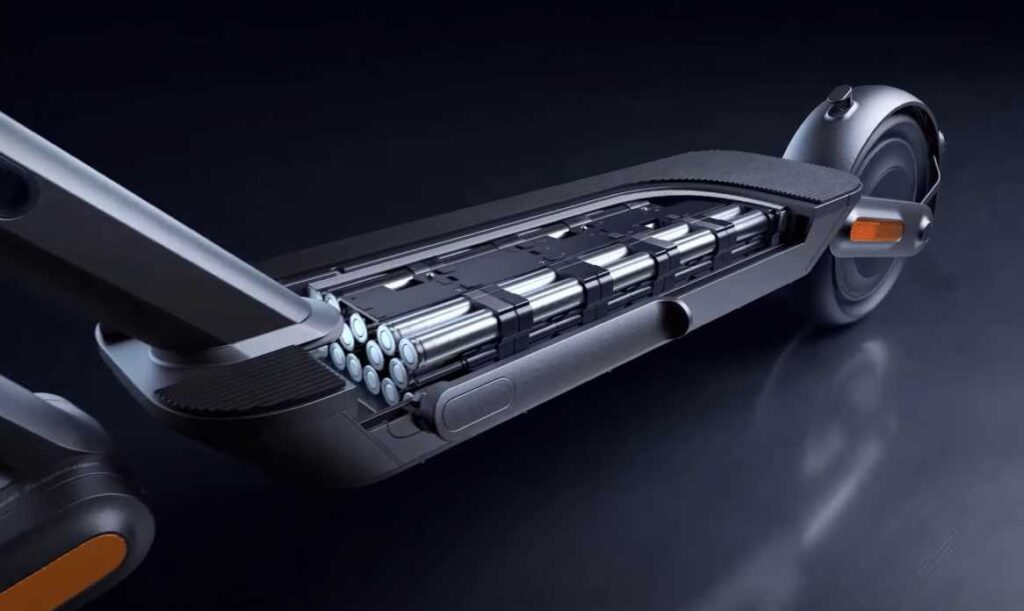
Deck Placement:
Deck placement involves integrating the battery into the deck of the electric scooter.
| Pros | Cons |
|---|---|
| Larger battery capacity for extended range | May affect scooter’s center of gravity |
| Lower center of gravity for improved stability | Reduced deck space for rider comfort |
| Enhanced design flexibility and aesthetics | Potential impact on scooter’s maneuverability |
| Improved weight distribution for a balanced ride | Limited accessibility for battery maintenance |
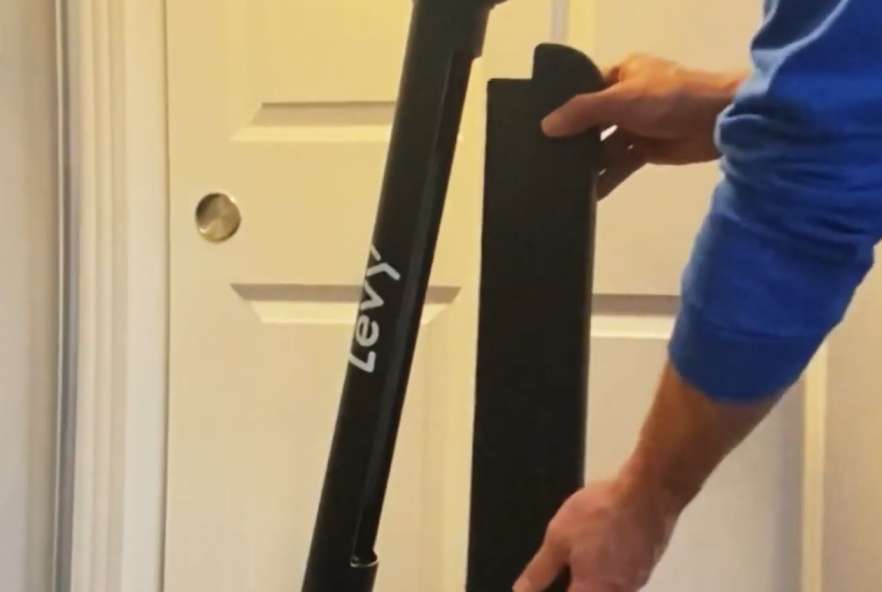
Photo Credit: EScooterNerds
Removable Battery Options:
Some electric scooters offer removable battery options, allowing users to easily detach the battery for charging or replacement. This option provides convenience, especially for users who may not have access to a power outlet near their scooter parking spot.
| Pros | Cons |
|---|---|
| This may limit the design options for the scooter | Requires carrying an extra battery when needed |
| East Remove the battery to protect against theft | May limit the design options for the scooter |
| Convenient battery access | |
| Allows for easy maintenance |
Battery Performance
If you want to select which battery will be suitable for your preference, you need to consider those factors to ensure your optimum choice. let’s go over the factors you need to consider:
Range and Endurance:
The range and endurance of an electric scooter depend on several factors. One of the primary considerations is the battery capacity, which determines the amount of energy the battery can store.
Other variables that affect range include the weight of the scooter and its rider. Heavier loads require more power to propel the scooter, resulting in a shorter range. Additionally, factors like speed, terrain, and rider behavior impact energy consumption.
Higher speeds and uphill climbs demand more power, reducing the scooter’s range. Riding habits, such as sudden accelerations or frequent braking, can also affect overall energy efficiency.
Energy efficiency plays a crucial role in determining the endurance and battery performance of an electric scooter. Efficient motor design, optimized power management systems, and regenerative braking mechanisms contribute to more economical use of energy.
Voltage sag refers to a temporary drop in the voltage output of a battery during periods of high current demand. When voltage sag happens, the scooter’s acceleration and overall power may be affected.
It is crucial to choose a battery with low voltage sag to ensure consistent and reliable performance, especially during uphill climbs or when accelerating quickly.

Charging Time and Methods:
Fast charging
Fast charging enables quick top-ups of battery power, allowing riders to get back on the road swiftly. However, fast charging tends to generate more heat, which can contribute to increased battery degradation over time.
Consequently, frequent use of fast charging may slightly reduce the overall lifespan of the battery. It is advisable to use fast charging sparingly, such as when time is of the essence, and balance it with slower charging methods to promote battery health.
Slow charging
On the other hand, slow charging is a more gentle approach that promotes longer battery life. Charging at a slower rate helps maintain the battery’s temperature and minimizes stress on its internal components.
This method is particularly useful for overnight charging, ensuring the battery reaches its maximum capacity without subjecting it to rapid temperature changes or excessive heat.
C-rate and charging speed
The C-rate is a measure of how fast a battery can be charged or discharged relative to its capacity. Higher C-rates allow for faster charging and discharging.
It is crucial to use chargers that are compatible with the battery’s recommended C-rate to ensure safe and efficient charging. Charging the battery at a higher C-rate than recommended can lead to reduced battery life or even safety hazards.
Battery Management Systems (BMS):
Battery management systems (BMS) are integral to electric scooter batteries as they monitor and regulate various battery parameters. A BMS acts as the guardian of the battery, ensuring its optimal performance and safety.
It balances cell voltages, ensuring that individual cells within the battery pack are charged and discharged uniformly. This balancing prevents any cell from being overcharged or over-discharged, which can lead to reduced battery lifespan or even safety hazards.
Environmental Factors (Temperature, Humidity):
Temperature and humidity levels play crucial roles in battery efficiency and longevity. Extreme temperatures, both hot and cold, can negatively affect the battery’s capacity and overall performance.
It is important to operate electric scooters within the recommended temperature range specified by the manufacturer.
Additionally, exposure to high humidity levels can lead to corrosion and degradation of battery components. Proper storage and protection from excessive moisture are essential for maintaining optimal battery performance.

Battery Maintenance and Care
Taking care of your electric scooter batteries should be your prime concern when you looking for longer service from your electric scooter:
Battery Storage Guidelines
To ensure optimal battery storage, it is advisable to maintain a charge level between 50% and 80% of the battery’s capacity.
This range helps prevent excessive discharge during certain periods, which is crucial for avoiding extended periods of fully discharged electric scooter batteries.
Extreme temperatures can also negatively impact battery health. When storing batteries, it is best to keep them in a cool, dry place away from direct sunlight and extreme temperatures. High temperatures will accelerate battery degradation, while very low temperatures can affect battery performance also.
Periodic maintenance and inspection are essential during storage. It’s recommended to recharge the electric scooter batteries every few months to prevent self-discharge and ensure they remain in good condition.
Regularly inspecting the battery for any signs of damage or wear, such as bulging, leakage, or corrosion, is important. for the best performance, every few months check the battery charge level to avoid full drain out of the battery.
Prolonging Battery Life and Maximizing Performance
To prolong the life and maximize the performance of electric scooter batteries, several best practices should be followed:
- Avoid full discharge: It is advisable to avoid fully depleting the battery before recharging. Partial charging cycles help maintain battery health and extend its overall lifespan.
- Moderate temperature storage: Keeping the battery in moderate temperatures, neither too hot nor too cold, helps preserve its performance and longevity. Extreme temperatures can affect battery efficiency and contribute to premature degradation.
- Follow manufacturer guidelines: Adhering to the manufacturer’s guidelines for charging cycles, charging methods, and maintenance practices are essential.
Manufacturers provide specific instructions tailored to their batteries, and following them ensures optimal battery performance.
- Regular maintenance: Perform routine maintenance tasks to keep the battery in good condition. Clean the battery terminals and connectors periodically to remove dirt, dust, or corrosion. Inspect the battery for any signs of wear, damage, or leaks. Addressing any issues promptly helps prevent further damage.
Troubleshooting Common Battery Issues and Solutions
Even with proper care, battery-related issues can sometimes occur. Here are some common problems and troubleshooting tips:
- Reduced range: If you notice a significant decrease in the scooter’s range, it could indicate battery degradation. Consider checking the battery’s age and capacity. If the battery is older or has experienced significant capacity loss, an electric scooter battery replacement might be necessary.
- Sudden power loss: If the scooter experiences sudden power loss during operation, ensure that the battery connections are secure. Loose or corroded connections can disrupt the power flow. Don’t forget to check the battery charge level and recharge if necessary.
- Charging difficulties: If you encounter difficulties while charging the battery, verify that the charger is compatible with your scooter’s battery.
Ensure the connections are secure and clean. If the issue persists, try resetting the battery management system (BMS) or consult a professional for assistance.
In case troubleshooting steps do not resolve the issues, it is advisable to seek assistance from a qualified technician or the electric scooter batteries manufacturer’s support team.
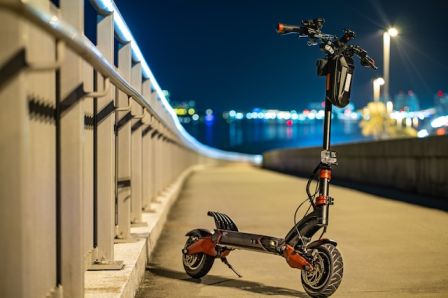
Battery Safety and Handling
Safety never goes in vain in any case, the same goes for the electric scooter battery handling option.
Safe Handling Practices for Batteries
It is essential to adhere to the manufacturer’s guidelines for handling batteries, including proper installation and secure mounting. Incorrect installation or loose connections can lead to safety hazards or damage to the scooter.
To ensure battery safety, precautions should be taken to avoid physical damage, exposure to extreme temperatures, or contact with water.
Always protect the battery from impact or dropping, as it can compromise its integrity and lead to potential risks. Extreme temperatures, both hot and cold, can affect battery performance and pose safety hazards.
Guidelines for Charging and Discharging Batteries
Proper charging and discharging practices are essential for battery safety and longevity. Follow these guidelines to ensure safe charging:
- Use the provided charger: Always use the charger specifically designed for your electric scooter battery. Using incompatible chargers can lead to overcharging, overheating, or other safety risks.
- Avoid overcharging: Do not leave the battery connected to the charger for an extended period once it has reached full charge. Overcharging can lead to battery degradation, reduced performance, or even safety hazards.
- Monitor the charging process: While charging, periodically check the battery and charger for any signs of overheating, unusual smells, or abnormalities. If you notice any issues, disconnect the charger and consult a professional.
- Alternative Charging: Alternative charging methods serve as a valuable option for riders to verify the functionality of their electric scooter’s battery charging system.
Addressing Potential Safety Concerns and Precautions
When it comes to battery safety, there are several potential concerns that need to be addressed:
- Fire hazards: Lithium-ion batteries, while generally safe, carry a slight risk of fire if mishandled or damaged.
- Risk of short circuits: Protecting the battery from physical damage, such as punctures or impacts, helps prevent short circuits. Always ensuring secure connections and proper insulation minimizes the risk of short circuits.
- Thermal runaway: Thermal runaway refers to a situation where the battery’s temperature rapidly increases, potentially leading to a fire or explosion.
Electric scooters are equipped with safety features such as temperature sensors, fuses, or cutoff mechanisms to detect and mitigate the risk of thermal runaway.

Photo Credit: Kickstarter
Waterproofing Electric Scooter Batteries:
While some scooters come with water-resistant or waterproof battery enclosures, it’s essential to take precautions to protect the battery from moisture. Here are some measures to waterproof electric scooter batteries:
- Battery Enclosure: Ensure that the battery compartment is properly sealed and that the enclosure provides adequate protection against water ingress. Follow the manufacturer’s instructions regarding waterproofing features and maintenance.
- Fenders and Mudguards: Install fenders and mudguards on your scooter to minimize water splashes and direct exposure to the battery.
- Avoid Riding in Heavy Rain: Always check the Electric scooter’s IP rating to know the level of water-resistive feature, it’s generally recommended to avoid riding in heavy rain or through deep puddles to protect the battery and other electrical components.
- Protective Covers: Consider using protective covers specifically designed for electric scooter batteries. These covers provide an extra layer of protection against moisture and potential water damage.
Battery Replacement and Upgrades
It is obvious during your electric scooter riding life, you have to think about the electric scooter batteries replacement. Do you have any concerns too, don’t bother! check out any quarries.
Determining When to Replace a Battery:
Knowing when to replace electric scooter batteries is crucial to maintain optimal performance and safety. Here are some signs that indicate it may be time for a battery replacement:
- Reduced Range: If you notice a significant decrease in the scooter’s range compared to when it was new, it may indicate battery deterioration.
- Difficulty Holding a Charge: If the battery struggles to hold a charge or if it drains quickly even after a full charge, it could be a sign of battery wear.
- Physical Damage: Visible signs of damage, such as swelling, leakage, or corrosion, indicate a compromised battery that should be replaced.
- Age and Usage: Electric scooter batteries have a limited lifespan, typically measured in charge cycles. If your battery has surpassed its expected lifespan or has undergone extensive usage, it may be time for a replacement.
Read More: Best Guide To Electric Scooter Battery Replacement: Boost Performance & Extend Lifespan
Exploring Battery Upgrade Options:
If you’re looking to enhance the performance of your electric scooter, battery upgrades can be a viable option. Consider the following factors when exploring battery upgrade options:
- Increased Capacity: Upgrading to a higher-capacity battery can extend the scooter’s range, allowing for longer rides without the need for frequent charging.
- Advanced Battery Technologies: Explore batteries with advanced technologies like higher energy density, faster charging capabilities, or improved durability for enhanced overall performance.
- Compatibility: Ensure that the upgraded battery is compatible with your electric scooter model, taking into account factors such as voltage, dimensions, and connection types.
- Manufacturer Recommendations: Check if the scooter manufacturer provides any recommended battery upgrade options or if they offer official upgrade kits.
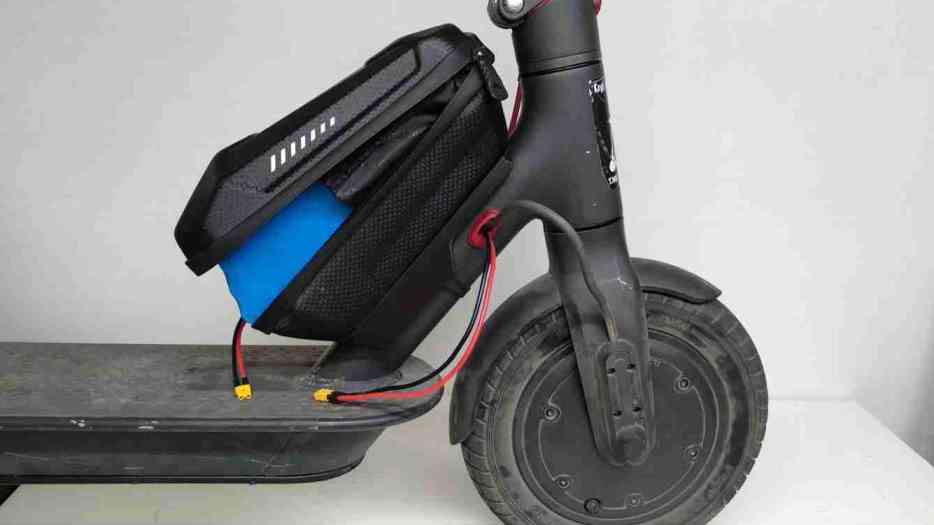
Photo Credit: Denis Yurev
Carrying Extra Batteries for Extended Rides:
For riders planning extended journeys or trips where charging opportunities might be limited, carrying extra batteries can be a practical solution.
While not all electric scooters offer swappable battery systems, it’s still possible to carry spare batteries with proper planning.
Before proceeding with a battery upgrade, thoroughly research the compatibility, specifications, and potential performance gains to make an informed decision.
Environmental Impact and Sustainability
Recycling and Disposal Options for Electric Scooter Batteries
As the use of electric scooters is increasing, it becomes the responsibility of all for battery disposal to minimize environmental impact and prevent contamination.
One effective solution is battery recycling. Many regions have established battery recycling programs or collection centers where consumers can safely dispose of their used batteries. These programs ensure that batteries are recycled in an environmentally friendly manner, with valuable materials extracted and reused in the production of new batteries or other products.
Additionally, some electric scooter manufacturers have implemented take-back initiatives, where they provide a means for customers to return used batteries for proper recycling.
Government Regulations & Initiatives on Battery Recycling
Recognizing the importance of electric scooter batteries for recycling and responsible disposal, governments have implemented regulations and initiatives to promote sustainability in the battery industry. These actions aim to reduce environmental impact and ensure the proper handling of used batteries.
Regulations may include guidelines for battery manufacturers to establish take-back programs or recycling requirements. Some governments provide incentives or subsidies to encourage battery recycling or impose penalties for improper disposal.
Future Trends and Developments
Advancements in Battery Technology
The future of electric scooters looks promising with ongoing advancements in battery technology. Some notable advancements include:
Higher energy density:
Efforts are being made to increase the energy density of batteries, allowing electric scooters to cover longer distances on a single charge. Higher energy density batteries would provide users with extended range and greater flexibility in their daily commutes.
Faster charging:
Researchers are exploring technologies that enable faster charging times for electric scooter batteries. Rapid charging solutions would significantly reduce the time required to replenish the battery, enhancing the convenience and usability of electric scooters.
Longer lifespan:
Improving battery lifespan is a key focus area. By upgrading the durability and longevity of batteries, users can enjoy reliable performance over an extended period. This would contribute to the overall cost-effectiveness and sustainability of electric scooters.
Sustainable Materials:
Battery manufacturers are exploring more sustainable materials for battery production, reducing the environmental impact and promoting eco-friendly practices.
Improvements in Range and Charging Speed:
Future advancements in battery technology have the potential to bring significant improvements in range and charging speed for electric scooters. Here are some potential developments to expect:
Extended Range:
Higher-capacity batteries combined with improved energy efficiency can offer electric scooters a longer range, allowing riders to travel greater distances without needing to recharge.
Rapid Charging:
Advancements in fast-charging technologies may enable electric scooters to charge at much faster rates, reducing charging times and increasing convenience for riders.
Swappable Batteries:
Swappable battery systems are gaining traction, allowing riders to quickly exchange depleted batteries with fully charged ones at designated stations, enabling seamless long-distance travel.
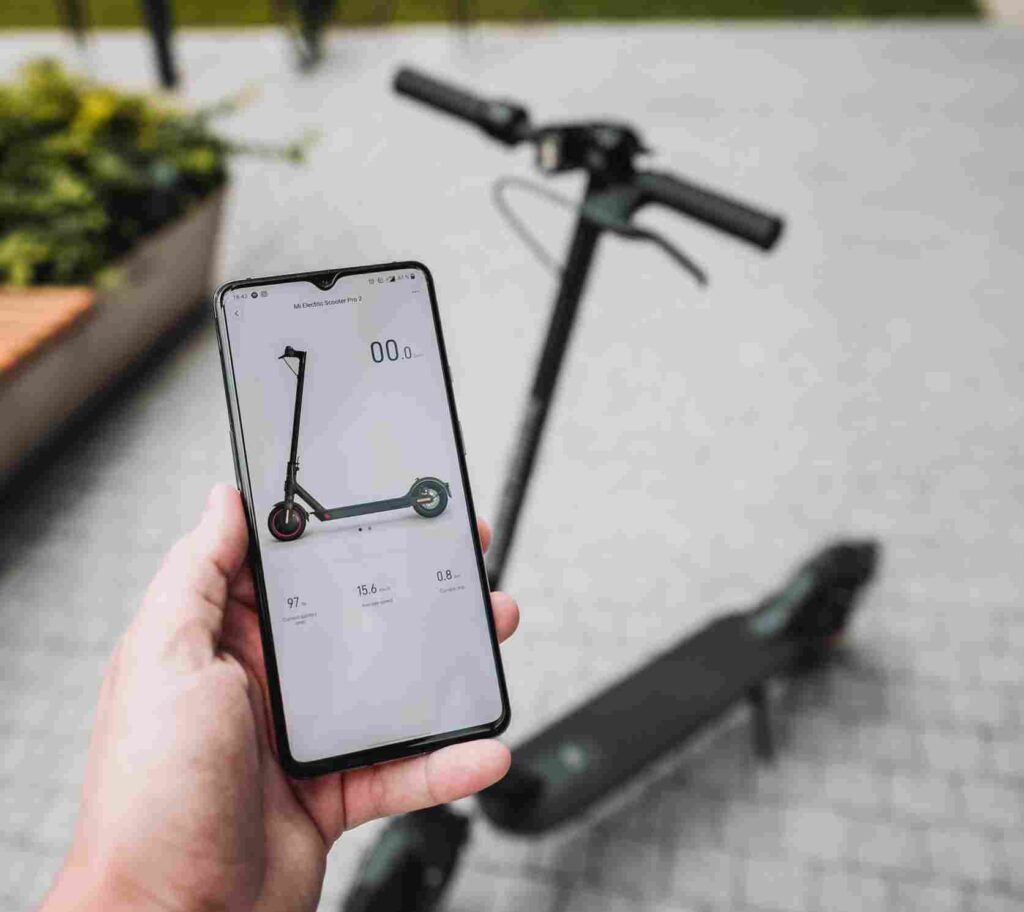
Integration of Smart Features and Connectivity:
As electric scooters become more advanced, the integration of smart features and connectivity is expected to play a significant role in enhancing the overall riding experience. Some potential developments include:
App Integration:
Mobile apps that connect to electric scooters can provide real-time battery status, range estimation, and personalized settings, offering riders greater control and convenience.
Intelligent Battery Management:
Smart battery management systems can optimize battery performance, monitor health, and provide notifications for maintenance or charging reminders.
Vehicle-to-Grid (V2G) Technology:
V2G technology allows electric scooters to contribute to the power grid by using their batteries to store and supply electricity during peak demand, promoting energy efficiency and grid stability.
Connectivity with Other Devices:
Integration with other smart devices, such as smartphones or smart home systems, can enable features like remote locking, theft prevention, and personalized settings.
Renewable Energy Sources for Charging Electric Scooter Batteries
Solar charging stations or portable solar panels can be installed to harness sunlight and convert it into electrical energy for charging electric scooters.
Similarly, wind turbines can generate clean electricity that can be used for charging purposes. Integrating renewable energy sources with electric scooter charging infrastructure not only promotes sustainability but also increases energy independence and resilience.
Gotrax Electric Scooter Battery
Gotrax electric scooters use a 36V lithium-ion battery that’s dependable. This battery can take you up to 16 miles on one charge, giving you good power and distance.
Electric scooter batteries come in different sizes, usually measured in watts. They can range from 100 to 1000 watts. The battery’s capacity, or watt hours, decides how far your scooter can go.
Gotrax offers various scooter models with different batteries:
- Gotrax G4 has a 36V 10.4Ah (374.4 Wh) battery. It’s lightweight but powerful, going up to 25 miles on one charge, and it takes just four hours to charge.
- Gotrax XR Ultra uses a 36V 7.0Ah (252 Wh) LG battery. It travels up to 16 miles on one charge, and it takes about five to six hours to charge.
- Gotrax GKS has a 25.2V 2.6Ah (65.52 Wh) battery, great for kids and beginners. It can cover 7.5 miles on one charge, with a charging time of about four hours.
Frequently Asked Questions (FAQs)
Are lithium batteries safe?
Yes, lithium batteries are generally considered safe for electric scooters when used and handled properly. Lithium-ion batteries, which are commonly used in electric scooters, offer several advantages such as high energy density, lightweight design, and long cycle life.
What does Ah mean in battery?
“Ah” stands for Ampere-hour. It is a unit of measurement used to quantify the battery’s capacity or the amount of electrical charge it can deliver over time. For example, a 10Ah battery can deliver a continuous current of 1 ampere for 10 hours or 2 amperes for 5 hours, and so on.
What is SLA battery?
SLA stands for Sealed Lead Acid, which is a type of rechargeable battery commonly used in various applications, including electric scooters.
SLA batteries are constructed with lead plates and an electrolyte solution that is sealed within the battery, hence the name “sealed.” The electrolyte is usually in gel or absorbed glass mat (AGM) form, which prevents spillage even if the battery is tipped or placed in different orientations.
Can battery in Razor scooter be replaced?
Yes, Razor scooters typically use rechargeable batteries that can wear out over time or become less effective. When the battery no longer holds a charge or does not provide sufficient power, it is possible to replace it with a new battery. It is advisable to ensure compatibility with the specific Razor scooter model and follow the manufacturer’s instructions.
Are all electric scooter batteries the same?
No, all electric scooter batteries are not the same. Electric scooters can use different types of batteries, such as lithium-ion (Li-ion), lead-acid (SLA), or nickel-based batteries (NiMH), which are the most common. These batteries differ in terms of energy density, charging time, lifespan, and other characteristics. Also, the specific battery size, voltage, and capacity can vary between different electric scooter models.
Conclusion:
As electric scooters continue to gain popularity as a sustainable and convenient mode of transportation, the role of batteries in powering these vehicles becomes increasingly significant. Electric scooter batteries serve as the heart of these vehicles, providing the necessary power for operation.
Understanding the basics of electric scooter batteries, including their types, voltage, capacity, and energy density, is essential for users seeking an optimal riding experience.
Electric scooter batteries, particularly lithium-ion batteries, are essential for powering these sustainable vehicles. Factors like voltage sag, battery management systems, and environmental conditions affect battery performance. Maximizing battery life requires proper charging, storage, and maintenance. Swappable batteries and extra options offer flexibility.
Upgrading batteries and monitoring future trends in battery technology show promise for improved performance and sustainability. Responsible practices and advancements in battery technology can lead to a cleaner and greener transportation future.
It is important for individuals, governments, and manufacturers to collaborate in adopting and promoting sustainable practices, including responsible battery disposal and recycling initiatives.



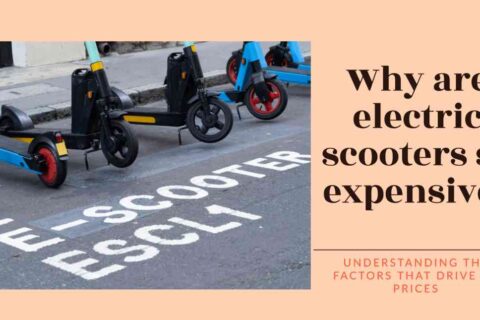



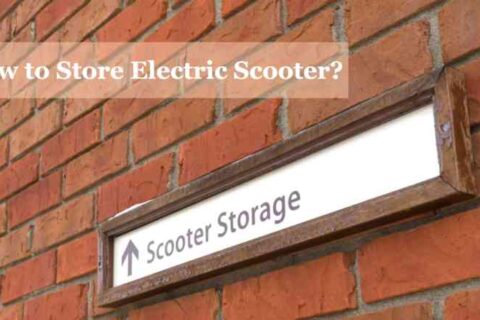
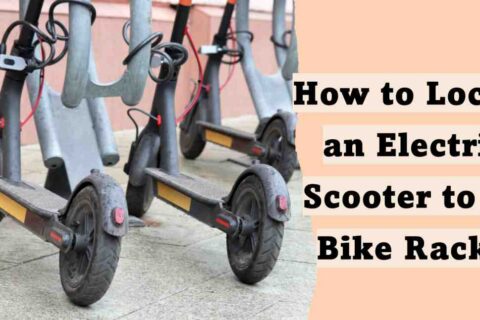
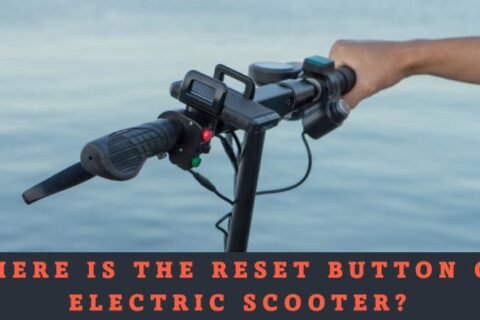

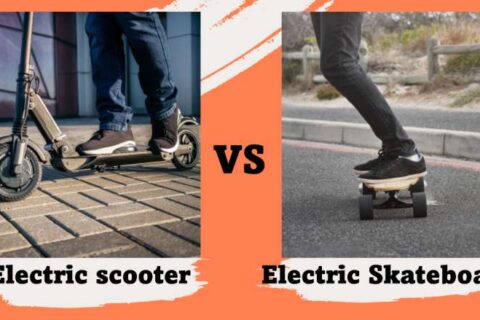
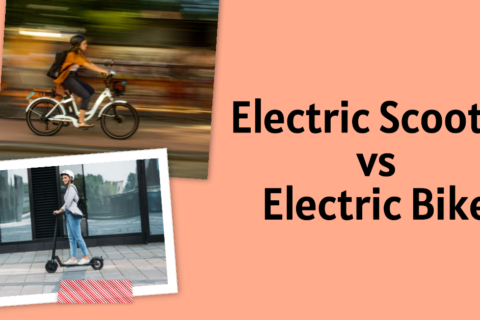


2 thoughts on “Electric Scooter Batteries – Everything You Want To Know”
Like this one, have taken some info from you
Can I take your info asreferance?
Sure Mukit,
Love to help, I you need any other quarries please contact by our mail.